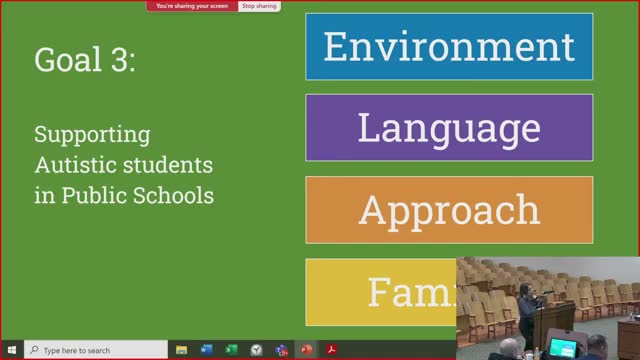Sensory room transforms learning for students with autism
October 18, 2024 | NIAGARA FALLS CITY SCHOOL DISTRICT, School Districts, New York
This article was created by AI summarizing key points discussed. AI makes mistakes, so for full details and context, please refer to the video of the full meeting. Please report any errors so we can fix them. Report an error »

During a recent government meeting, educators discussed the critical role of sensory rooms in schools, emphasizing their positive impact on student learning and emotional regulation. A presentation highlighted the design and functionality of a sensory room, which provides a calming environment for students to manage their sensory needs. The room features various stations, including a crash pad for students with sensory issues, a light wall for interactive play, and equipment like punching bags and swings tailored to individual preferences.
The presenter noted that students benefit significantly from these spaces, reporting improved focus and behavior after utilizing the sensory room. The structured environment allows students to engage in predictable activities that help them stabilize their emotions, ultimately preparing them for learning.
In addition to the sensory room discussion, the meeting addressed the importance of language when referring to autistic students. Educators advocated for a shift from deficit-focused terminology to more respectful and accurate descriptions, such as using \"high support needs\" instead of \"low functioning.\" This change aims to foster a more inclusive atmosphere and challenge negative connotations associated with terms like \"nonverbal,\" suggesting \"non-speaking\" as a more appropriate alternative.
The meeting also touched on different educational approaches for supporting autistic students, contrasting traditional Applied Behavior Analysis (ABA) methods with more play-based strategies. Educators shared personal experiences, noting that play-based approaches have yielded better engagement and outcomes for their students.
Overall, the discussions underscored the need for adequate funding and space to implement sensory rooms and the importance of adopting respectful language and effective teaching methods to support neurodiverse learners.
The presenter noted that students benefit significantly from these spaces, reporting improved focus and behavior after utilizing the sensory room. The structured environment allows students to engage in predictable activities that help them stabilize their emotions, ultimately preparing them for learning.
In addition to the sensory room discussion, the meeting addressed the importance of language when referring to autistic students. Educators advocated for a shift from deficit-focused terminology to more respectful and accurate descriptions, such as using \"high support needs\" instead of \"low functioning.\" This change aims to foster a more inclusive atmosphere and challenge negative connotations associated with terms like \"nonverbal,\" suggesting \"non-speaking\" as a more appropriate alternative.
The meeting also touched on different educational approaches for supporting autistic students, contrasting traditional Applied Behavior Analysis (ABA) methods with more play-based strategies. Educators shared personal experiences, noting that play-based approaches have yielded better engagement and outcomes for their students.
Overall, the discussions underscored the need for adequate funding and space to implement sensory rooms and the importance of adopting respectful language and effective teaching methods to support neurodiverse learners.
View full meeting
This article is based on a recent meeting—watch the full video and explore the complete transcript for deeper insights into the discussion.
View full meeting
